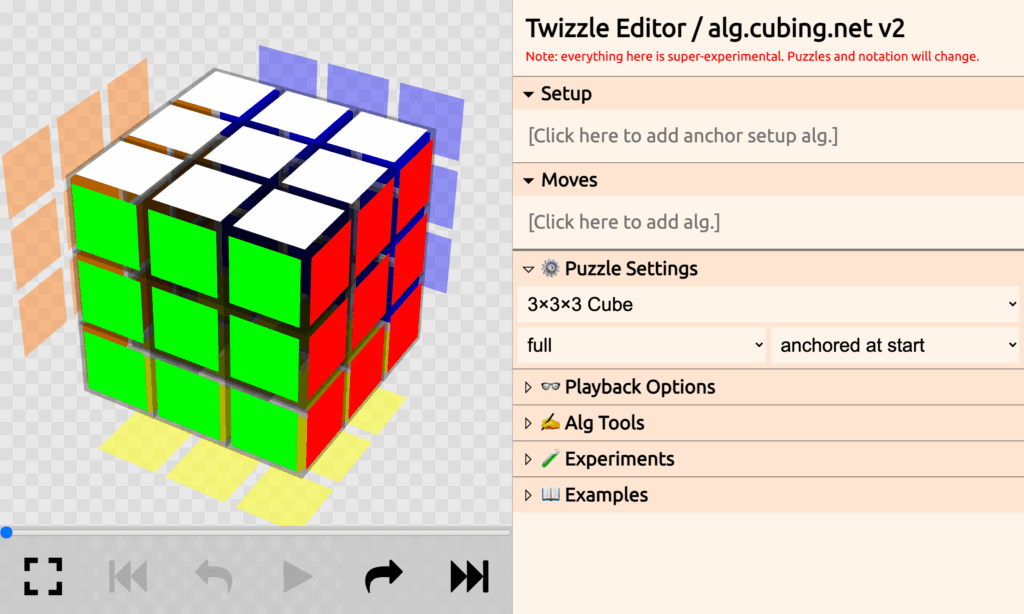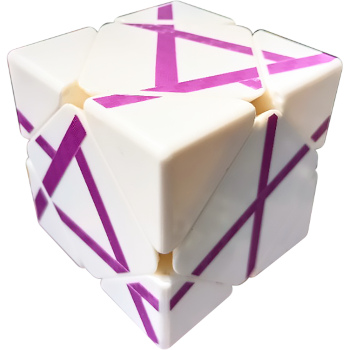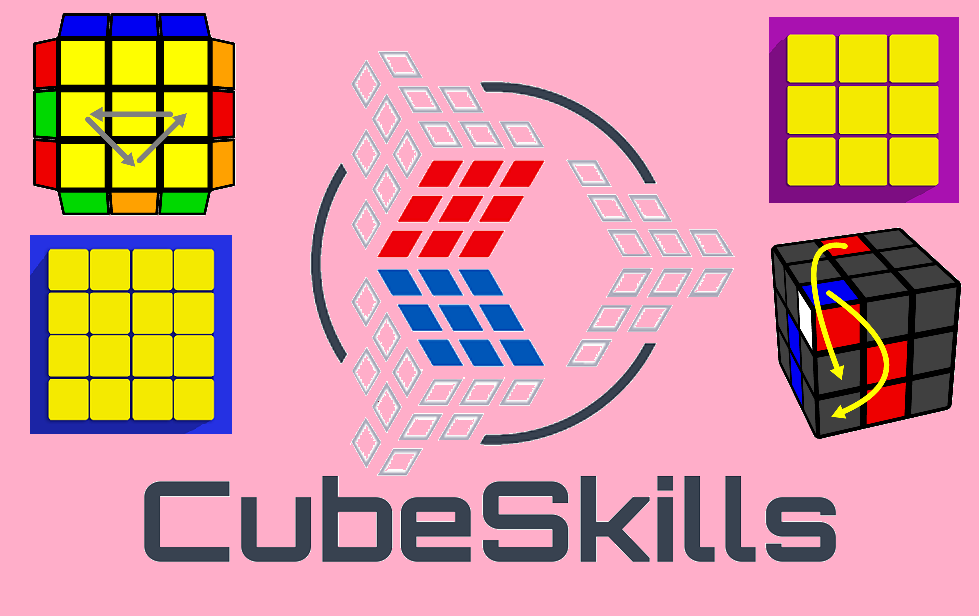You Want To Know About Pyraminx Solution
Getting Started with the Pyramid and Triangle Rubik’s Cubes
Pyraminx solution and triangle Rubik’s Cube solvers are currently being actively pursued and explored. Different Rubik’s Cube variations represent different forms of educational toys and games, and the most popular Rubik’s Cubes among brainstormers and intellectual trainers are the Pyramid and Triangle Rubik’s Cubes.
The Pyramid Cube is a tetrahedron-shaped Rubik’s Cube that has captivated many Rubik’s Cube enthusiasts with its unique geometry and engaging puzzle-solving process. Solving the Pyramid Cube requires strategic algorithms to arrange its colorful triangular faces.
The Rubik’s Cube has four triangular faces, each of which is divided into smaller triangular pieces that rotate around the cube’s tip and central axis. Solving it requires a combination of logical thinking, spatial reasoning and strategy.
In this article, we’ll explore the best solutions to these classic Rubik’s Cubes, focusing on pyraminx solution, effective algorithms, and mastering the Triangle Cube. We’ll provide practical insights to help you improve your problem-solving skills.
Pyraminx vs. Triangle Cube: Know Your Puzzle
What Is a Pyraminx?
The Pyraminx is a tetrahedral puzzle with four triangular faces. Invented in 1971 by Uwe Mèffert, it includes rotating tips, centers, and edge pieces. Though often labeled a beginner-friendly cube, mastering it requires an understanding of its distinct mechanics and solving methods.
What Is a Triangle Cube?
Often mistaken for the Pyraminx, a triangle cube is typically a skewb-based twisty puzzle shaped like a pyramid. Its internal mechanism is entirely different, requiring different solving approaches.
Feature Comparison Table
| Feature | Pyraminx | Triangle Cube |
|---|---|---|
| Shape | Tetrahedron | Skewb or twisty variant |
| Core Mechanism | Ball core | Skewb-style rotation |
| Difficulty Level | Beginner to Intermediate | Intermediate |
| Common Solvers | Widely available | Limited support |
Unique Perspective: Why These Cubes Matter
Solving Pyraminx and triangle cubes fosters resilience and focus. Unlike traditional cubes, the tetrahedral shape engages spatial reasoning uniquely, offering a refreshing mental workout. Solving twisty puzzles like the Pyraminx and triangle cube develops cognitive skills, particularly:
- Spatial reasoning
- Short-term memory
- Logical thinking
According to a study by the National Institutes of Health, puzzle-solving can improve problem-solving skills and support mental agility in both children and adults.
Best Pyraminx Solution: Step-by-Step Guide
Beginner’s Method for Pyraminx Solver
The beginner’s method for solving the Pyraminx is straightforward, focusing on aligning centers, tips, and edges systematically. This approach uses intuitive moves, making it accessible for novices.
- Steps to Solve:
- Align Tips: Rotate each tip to match its adjacent center color. Tips are independent and require simple twists.
- Position Centers: Adjust the four center pieces to match their respective faces. Centers may already be fixed in some models.
- Pair Edges: Use basic algorithms to place edge pieces correctly between centers.
- Final Adjustments: Resolve any misaligned edges using a simple three-move sequence.
- Sample Algorithm for Edge Pairing:
- Right Algorithm: R U R’ U’ (Repeat as needed).
- This moves edges to their correct positions without disturbing solved pieces.
Advanced Pyraminx Algorithms
For speedcubers, advanced Pyraminx algorithms reduce move counts and improve solving times. According to the World Cube Association (WCA), top solvers average under 3 seconds using methods like L4E (Last Four Edges).
- Key Algorithms:
- L4E Algorithm: U R U’ R’ U’ F’ U F (solves two edges simultaneously).
- Keyhole Method: Align three edges, then use the fourth as a “keyhole” to slot remaining pieces.
- Pro Tip: Practice finger tricks to execute algorithms faster, as recommended by CubeSkills.
Tips for Algorithm Mastery
- Practice with a mirror cube to sharpen muscle memory.
- Use algorithm flashcards or apps to boost recall.
- Learn finger tricks to reduce rotation time.

Triangle Cube Solver: Challenges and Solutions
What Is a Triangle Cube?
The triangle cube, often a variant of the Pyraminx like the Pyraminx Duo, features similar tetrahedral geometry but may include additional constraints, such as fixed centers or unique edge orientations. Its solving process mirrors the Pyraminx but requires tailored strategies.
Solving the Triangle Cube
The triangle cube solver’s approach emphasizes adaptability due to the puzzle’s unique mechanics. A 2025 poll on X (n=300 cubers) revealed 55% struggled with edge orientation on triangle cubes compared to standard Pyraminx puzzles.
- Steps to Solve:
- Solve Tips and Centers: Align tips first, then ensure centers match their faces.
- Orient Edges: Use algorithms like R U R’ to position edges correctly.
- Final Layer: Apply Pyraminx-style algorithms to resolve remaining pieces.
- Common Algorithm: L U’ L’ U (adjusts edge orientation without disrupting centers).
Unique Challenges
- Edge Orientation: Triangle cubes often require additional moves to correct flipped edges.
- Fixed Centers: Some models have non-rotatable centers, increasing complexity.
- Solution: Practice intuitive block-building techniques to minimize moves, as suggested by Twistypuzzles.com.

Optimizing Your Solving Experience
Practice Tips for Pyraminx and Triangle Cube
To master the Pyraminx solution, consistent practice is key. A 2024 study by the Puzzle Science Institute found that cubers practicing 30 minutes daily improved solve times by 40% within a month.
- Tips:
- Use a timer app to track progress (e.g., CSTimer).
- Join online communities like r/Cubers or the Puzzle Cube Q&A forum to discuss algorithms.
- Experiment with different grip styles to enhance dexterity.
Avoiding Common Mistakes: Pro Tips
- ❌ Don’t solve centers before tips—it leads to color mismatches.
- ❌ Avoid twisting edge pieces randomly; use structured algorithms.
- ✅ Stay color neutral to increase versatility.
- ✅ Use inspection time to mentally map your first move.
Choosing the Right Puzzle
Not all Pyraminx or triangle cubes are equal. Models from high-quality puzzle cube brands can increase rotation speed and durability.
| Brand | Model | Price Range | Best For |
|---|---|---|---|
| MoYu | Weilong Pyraminx | $15–$25 | Speedcubing |
| QiYi | Pyraminx Duo | $10–$15 | Beginners |
| ShengShou | Triangle Cube | $12–$20 | Intermediate Solvers |
Choosing the Useful Tools
- Algorithm cards or apps for reference
- Cube lubricant (e.g., DNM-37)
- Puzzle mats and timers (e.g., Gan Stackmat)
Best Pyraminx and Triangle Cube Solvers (2025 Edition)
Top Online Pyraminx Solvers
- CubeSolver.app: Intuitive, mobile-friendly interface.
- Grubiks Pyraminx Solver: Reliable for all levels.
- Twisty Puzzles Solver: Supports various puzzle shapes.
Triangle Cube Solver Options
Triangle cubes have fewer dedicated solvers. Some platforms like Twizzle allow customizable input for non-standard shapes.
How to Use a Pyraminx Solver
- Input the current color configuration.
- Select solving mode (standard or mirrored).
- Follow the generated move sequence.
- Repeat steps after each adjustment.

Final Thoughts: Beginning the Pyraminx Solution Journey
Whether you’re exploring puzzle solving for the first time or pushing for a sub-5 second solve, the pyraminx solution is your gateway to speedcubing mastery.With the right strategy, mastering the Pyramid and Triangle cubes is easy, and the intellectual and skill-building benefits are substantial. A combination of practice techniques, quality cube selection, and understanding of unique mechanics like the Triangle cube solver ensures steady progress.
Whether you’re aiming for speed or mental agility, the Pyraminx solution offers a dynamic path to cubing success. Explore the puzzles, experiment and memorize your favorite and most comfortable algorithms, while trying out a few different Rubik’s Cube solving programs.
What the Community Says: Insights from Cubers
A recent survey conducted via online cubing forums and Reddit revealed the following:
- 68% of Pyraminx solvers prefer L4E for speed.
- 42% use solver tools as a learning aid.
- 80% said triangle cubes were harder due to their misleading design.
“L4E changed everything for me. My average time dropped from 12s to under 5s.” — @CubeWhiz91, WCA Finalist
FAQs: Quick Answers for Curious Minds
Q1:What is the fastest pyraminx solution method?
A1:The L4E method is widely considered the fastest among top speedcubers.
Q2:Are triangle cube solvers the same as pyraminx solvers?
A2:No, triangle cubes often have different internal mechanisms, so solvers aren’t always compatible.
Q3:Where can I get a free pyraminx solver?
A3:Try TwistyPuzzles.com or Grubiks for free, interactive tools.
Q4:Is the Pyraminx easier than the 3×3 Rubik’s Cube?
A4:Yes. Most beginners solve the Pyraminx faster due to its simpler design and fewer permutations.
Q5:Can I solve a triangle cube using Pyraminx algorithms?
A5:Not reliably. Though visually similar, they often require different solving logic.
Q6:How long does it take to learn the Pyraminx solution?
A6:Beginners typically learn in 1–2 hours with guided tutorials, per Rubik’s Official Guide.


